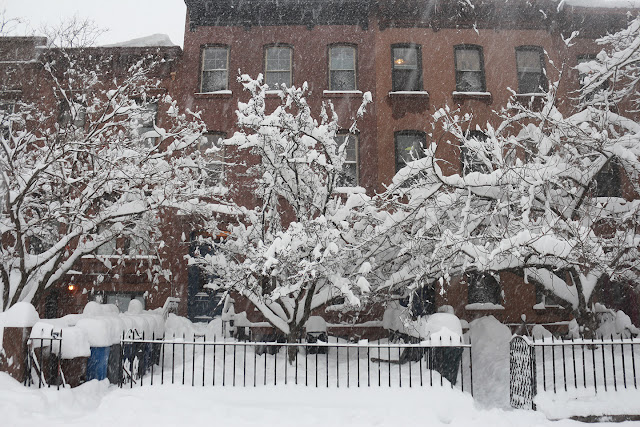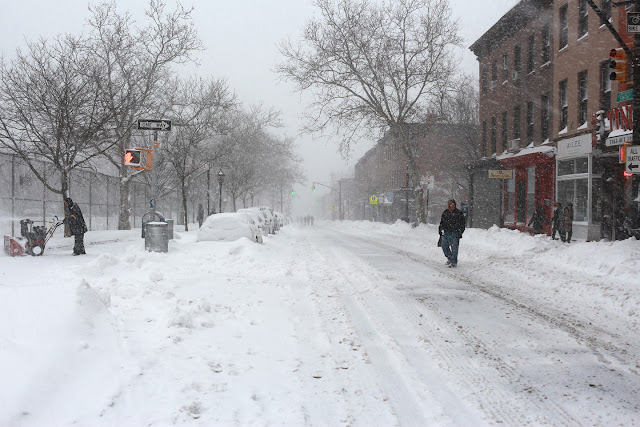There are several South African Matjiesfonteins, if you start Googling. This is the one that belongs to
Papkuilsfontein guesthouse and farm, near Nieuwoudtville.
We slept here for two nights in September, which is South Africa's spring.
Photo: the Frenchman
Matjiesfontein's wide white walls enclosed the sort of space I could live in, forever. Or, you know, till I die. Whichever comes first. But this was borrowed time - for most of the year, Mariette and Willem van Wyk, the owners of Papkuilsfontein, live here. Willem restored the homestead's structure and moving parts, and Mariette brought it to life, inside.
Thick walls, deep windowsills, cold, solid floors (with heating pads under the rugs - a brilliant invention), books - good ones, a rosemary hedge humming with bees, and birds: brilliant bishop birds visiting the nearby spring, a resident coot, paddling in the deep puddle we had to cross in the car to get to the house, a malachite sunbird, a pair of swallows rebuilding their mud nest in the eaves of the nearby rondawel.
(Read more story about the house itself - which dates back to the seventeenth century - in
my story for Gardenista).
We were happy. Very happy.
During the day, we drove through fields of flowers on the farm Papkuilsfontein, some kilometers further up a dirt road. After good rains, the flowers appear in this region - known as the Hantam - like snow in technicolour. The window is narrow - the weeks from mid August to early September are prime flower time.
It was towards the middle of the second week of September and already the show was past its best - so said people of the region.
I had no complaints. Would you?
One woman did. I was buying some home-baked and -bottled goodies at Lekkerbek, a wooden shack on the the main drag through town one day, when an Englishwoman's voice complained to the owner, "I am just so TIRED of yellow flowers! It's all you have! Where are the
blue flowers?"
I cringed. Flower tourists.
I mean, yes, there was a lot of yellow.
Is that a bad thing? Above Bulbinella latifolia, en masse.
Nemesia cheiranthus.
Cotula.
The air here smelled like honey.
A shrubby species of Hermannia, near our house.
A very aromatic false buchu -
Diosma acmaephylla. Yes, I cooked with it, two nights later (in a completely different landscape). Needles so sharp they drew blood.
In the land of geophytes, a glorious gladiolus, above. In our trip, we had driven
as far north as Kamieskroon, 500km from Cape Town, and then towards the coast, where succulents and daisies rule. Now, south of there, 350km from Cape Town, but suddenly high on this escarpment, we were in the most bulb-rich spot on earth.
On. Earth.
I'm telling you: put this on your To Do list.
Because for anyone paying attention, there is plenty of blue, too!
Felicia australis, above.
But somehow color is immaterial, yielding to form, diversity, and mindblowing variety.
The blue above is flax.
Lapeirousia...
A field of
Ixia rapunculoides, right in town, outside the church. "Tired of yellow." Pfff. Her eyes were closed.
A ghostly Moraea, above.
Above - a thorny shrub I have not identified.
Garden-friendly internationally -
Anchusa capensis in its homeland.
And Lachenalias growing lushly in a damp patch on the road out of town.
Another Lachenalia, growing on the very dry edge of the Oorlogskloof ('war canyon'), below:
We found many solitary flowers while we hiked in the dry Renosterveld on the edge of this canyon, a sudden and stunning feature in the landscape, and one that had drawn me to Papkuilsfontein in the first place.
Another Moraea, above. While I have piles of excellent regional books, time has been short and so not all ID's are offered, yet.
An orchid above, Holothrix aspera - growing from crumbling rock. Each flower smaller than a pinkie-nail.
A species of Crassula in its own lichen garden. Lichen is an indicator of clean air.
Vygies.
The pools below are what you see just above the slim waterfall, above.
Here, Mariette told me, the water never dries up completely, not even in the very hot summers. These pools are the kuils of Papkuilsfontein.
Waterblommeties were in bloom, and looking at them made me hungry for the Cape bredie that they flavor.
Change of subject:
Is this leopard poo, about 12 inches long? Because I suddenly grew eyes in the back of head and began staring at the rocks very carefully.
Ok, fine; back to flowers.
Towards town, we drove on the deeply rutted back roads (each telling silent stories about stuck cars in the rainy season). And beside standing rainwater, we found these beautiful Wurmbea stricta, above.
And in the nearby Hantam National Botanical Garden - once Neil MacGregor's beloved farm, Glen Lyon, which I visited in 2006 with my mom - once-seen, never forgotten Sparaxis elegans, above - like an Art Deco hallucination.
Along with Moraeas like flocks of butterflies.
And evidence of porcupine activity. Their digging is considered an important part of the local geophyte cycle of life. We saw one, one night, sailing ahead of us in the carlights, his black and white needles erect and swaying, pausing often to dig and eat and grunt, turning his back and bristling when Vincent got out of the car to take his picture.
There are other seasons, of course. Green winter, while it is raining (and hopefully it is raining). April, when, a few weeks after the first autumn rain,
the Brunsvigia bloom: giant pink candelabras. Very hard to pin down, but if you hit it, you are very lucky. Summer, when it will be very peaceful, and the nights will glitter beneath the Milky Way.
Matjiesfontein itself is only available in spring, but there are three beautiful, aloof
stone cottages on Papkuilsfontein (they were fully booked while we were there) where you can self cater, or order dinner to be delivered to
your stoop. They looked wonderful.
It is a special part of the world.
Go.











































































